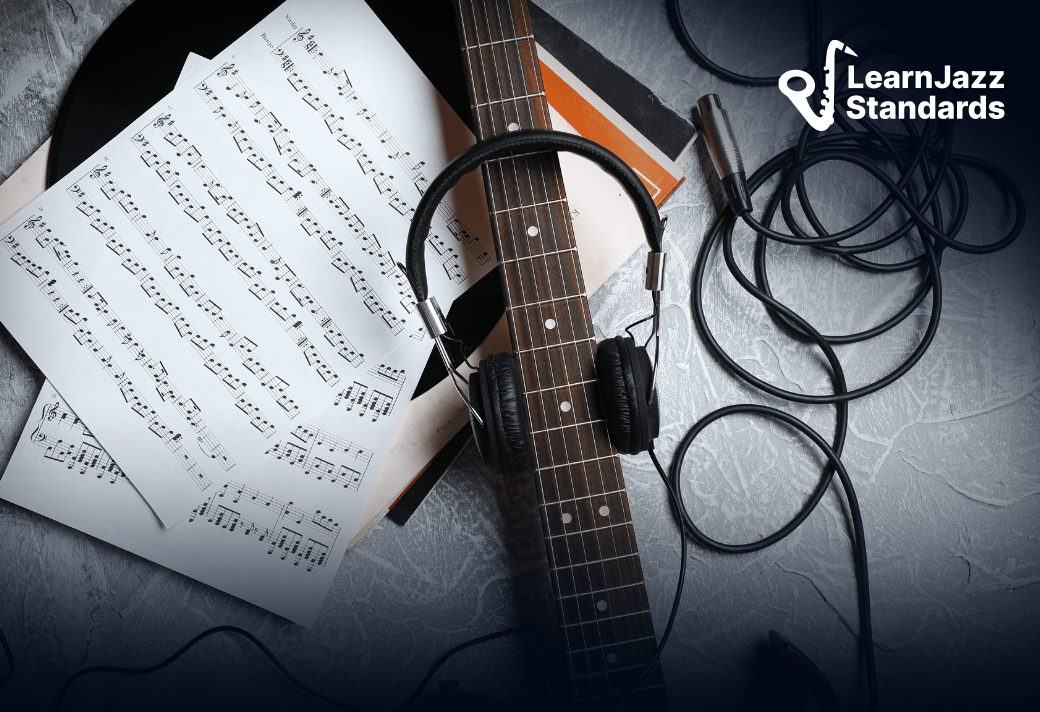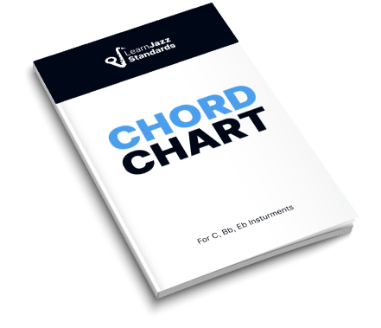Some guitar players’ eyes glaze over when they hear “diminished chord.”
However, there are many great reasons why you should know about diminished chords and how to use them to enhance your jazz guitar playing. That’s what we’ll explore in this Diminished Chord Guitar Workshop.
The truth is that diminished chords are actually quite simple to play on the guitar.
The challenging part is knowing how and when to use them since there are so many ways a jazz guitar player can incorporate diminished chords and the “diminished sound” into their guitar playing.
We’ll break down everything you need to know about diminished 7th chords, including:
- Diminished Chord Formula
- Diminished Chords on the Guitar Fretboard
- Diminished Chord Theory and Application (How to Actually Use Them)
This post will help you learn, memorize, and utilize diminished seventh-chord shapes on the guitar.
If you found this post, chances are you are looking for ways to improve your jazz guitar playing. If so, you must check out the Learn Jazz Standards Inner Circle. The Inner Circle is a membership community for musicians who share a common love of jazz and want to become the best jazz musicians they can be.
When you join, you’ll gain access to the Jazz Guitar Accelerator course, which is designed to help you master the fretboard and overcome the technical hurdles that are slowing down your progress.
Ready to master the fretboard? See what the Inner Circle is all about.
Table of Contents
Diminished Seventh Chord Formula
Chord Formula: Root-b3-b5-bb7
Using this chord formula, the notes in a Gdim7 would be G-Bb-Db-E.
Let’s take a look at what a Gdim7 looks like notated in close root position, 1st inversion, 2nd inversion, and 3rd inversion:

Half-Diminished Seventh Chords Versus Diminished Seventh Chords
Half-diminished chords and fully-diminished chords both contain a diminished triad. However, one note is the key difference between Diminished 7th Chords and Half-Diminished Chords.
A half-diminished chord has a minor 7th interval in it. To make it a fully diminished 7th chord, you need to take the minor 7th interval and flatten it by one half-step.
Any seventh chord can have one of three different types of 7th intervals:
- Major 7th: Found in any major 7th chord and in any minor chord with a major 7th
- Minor 7th: Found in any dominant chord, minor 7th chord, minor 7 b5 chord, and other minor chord qualities (minor 6th chord, etc)
- Diminished 7th: Found only in dim chords
Major Seventh Interval
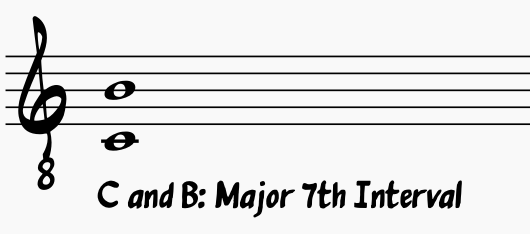
Minor Seventh Interval
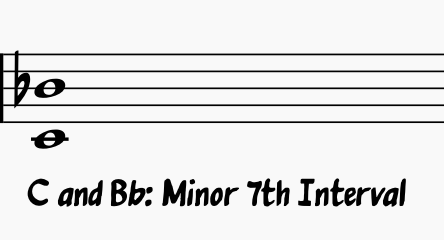
Diminished Seventh Interval

So, half-diminished chords have a minor 7th interval, and fully diminished chords have a diminished 7th interval:
Note the chord charts show different voicings than the notes on the staff. You’d need extremely big hands or a very small guitar to play these diminished chords in closed root position!
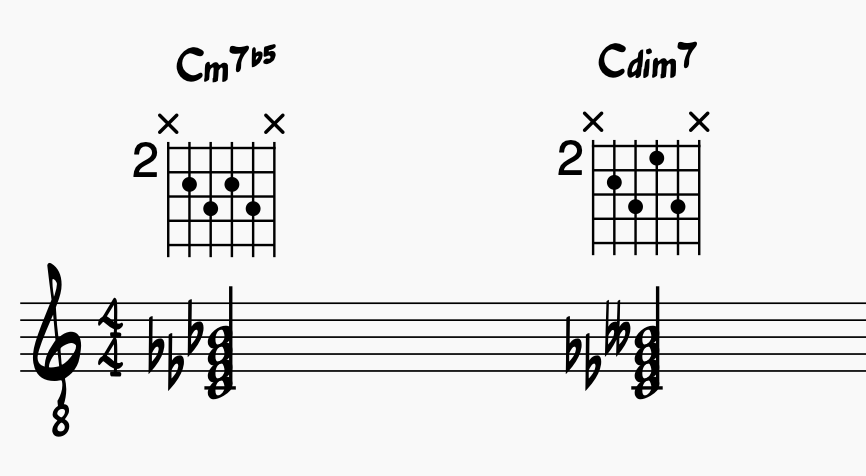
A regular Cm7b5 chord is spelled like this:
- Bb (Minor 7th)
- Gb (Flat 5th)
- Eb (Minor 3rd)
- C (Root Note)
However, a fully diminished C chord is spelled like this:
- Bbb (Enharmonically Equivalent to a Major 6th Interval or the note “A”)
- Gb (Flat 5th)
- Eb (Minor 3rd)
- C (Root Note)
Check out our article on half-diminished chords to learn more. And, if you wish to learn more about 7th chords in general, check out our ultimate guide to 7th chords.
Diminished Chord Guitar Workshop: Diminished Chords Demystified
Diminished chords are fairly easy to memorize on the guitar because diminished chords are symmetrical.
This means the shape of the root position is identical to the shape of all of its inversions. By memorizing one chord shape per string group, you also learn three inversions of that chord shape because they are the same shape.
Here is an explanation of how that works. A fully diminished chord is built from four minor 3rd intervals (or a diminished triad with an additional minor third added to the flat 5th).
Each note is equally distant from the other adjacent notes.
For example, in a Cdim7 chord, the C is a minor third away from the Bbb and the Eb. The Gb is a minor third away from the Eb and the Bb. And so on. If you played a diminished arpeggio—C to Eb to Gb to Bbb back to C—the path you took to get to the next C was made entirely from minor 3rd intervals.
Another way to see this is to look at how diminished chords evenly break up an octave. The twelve-tone octave can be evenly divided into four consecutive minor thirds.
This means diminished chord shapes, and their inversions are crystalized into identical shapes. But the best way to understand this concept is to play it:

As you can see, we use the same chord shape despite changing which chord inversion we are playing.
However, the shapes change depending on which string group we play on. Remember, however, that the intervallic relationships between the notes never change. Each note is always a minor third from adjacent notes.
Barring advanced diminished chord voicings that string skips, there are only three diminished chord shapes you’ll need to know.
Let’s learn all three fully diminished chord shapes:
1. Diminished Chords on the “EADG” String Group
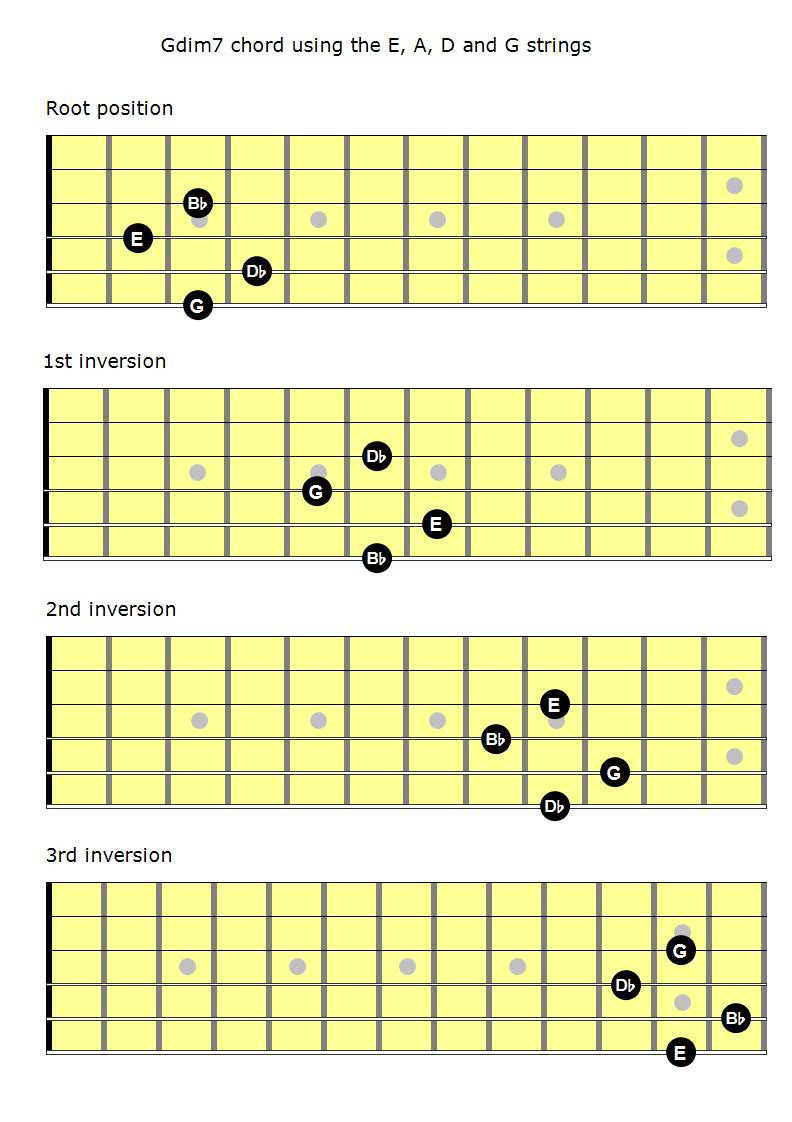
2. Diminished Chords on the “ADGB” String Group
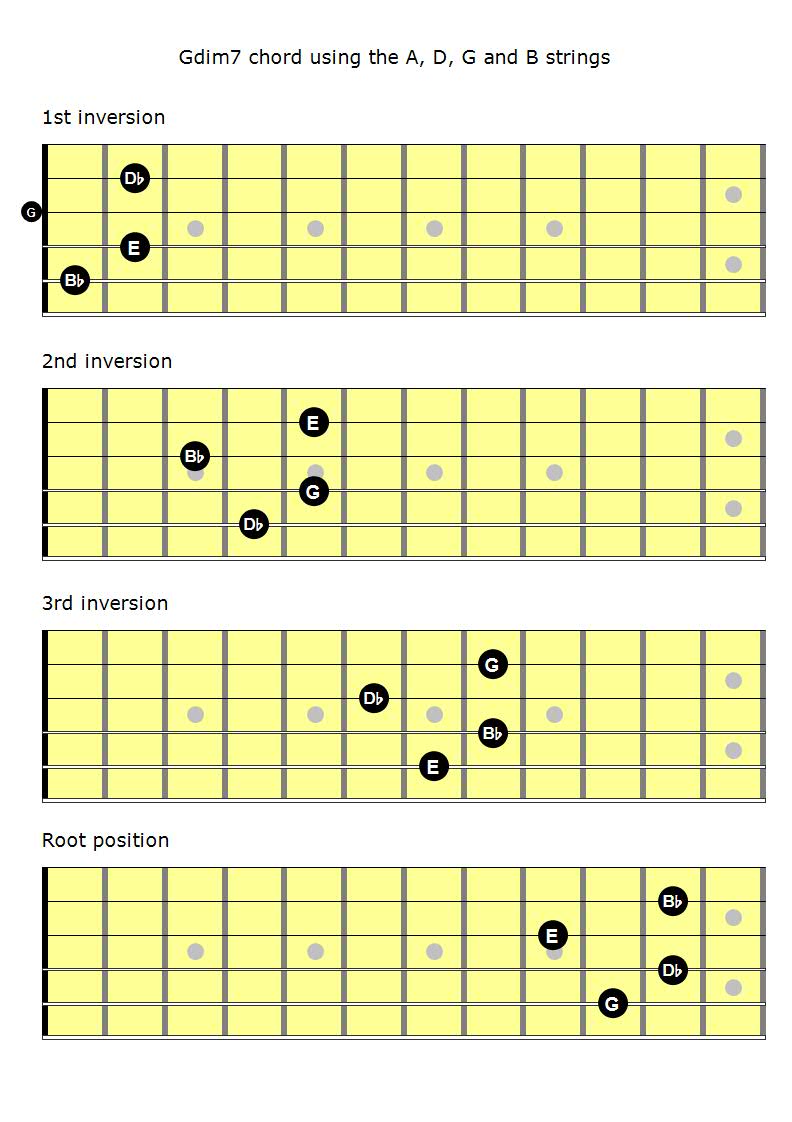
BEFORE YOU CONTINUE...
If music theory has always seemed confusing to you and you wish someone would make it feel simple, our free guide will help you unlock jazz theory secrets.

3. Diminished Chords on the “DGBE” String Group
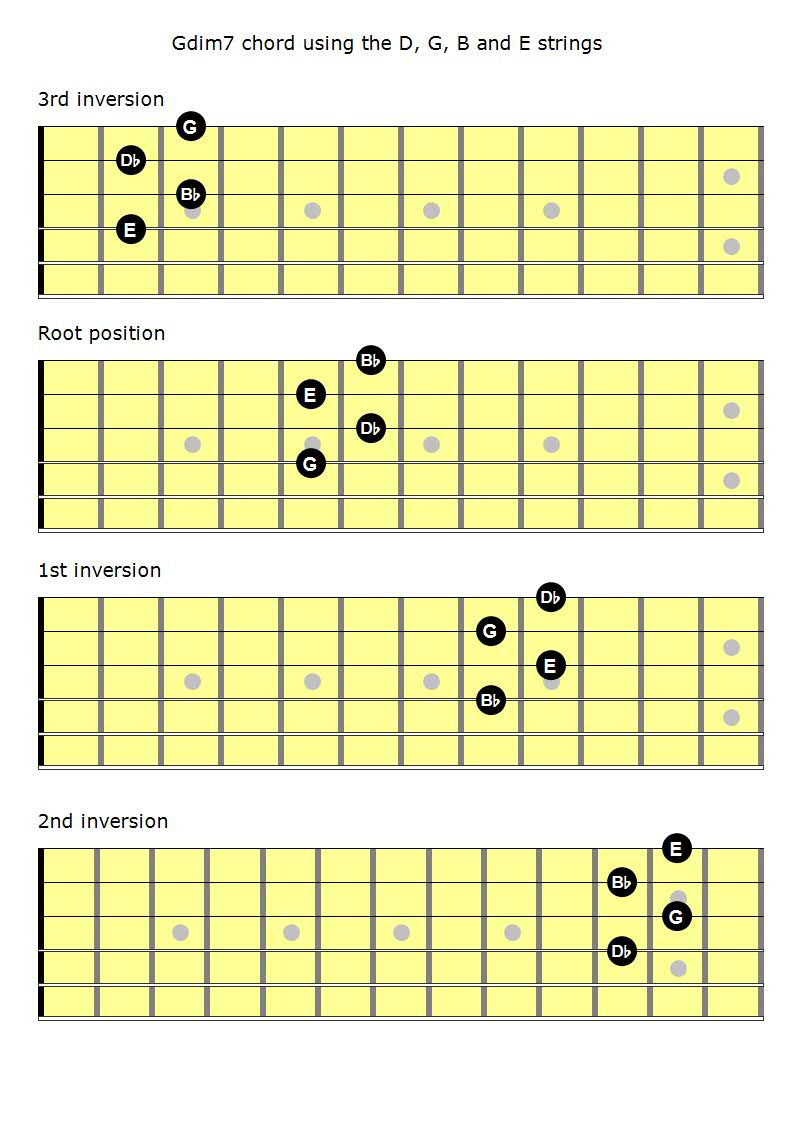
Diminished Chord Guitar Workshop: Diminished Chord Theory and Application
So now that we know what a diminished chord is and how to play them all over the guitar fretboard, let’s talk a bit about how to use them to play jazz.
Diminished Chord Guitar Workshop: Exploring The Relationship Between The Diminished 7th Chord And Dominant Chords
You can learn a really cool diminished guitar chord trick to cement the relationship between dominant and diminished chords.
Here is the gist:
If you start with any diminished 7th chord on the guitar, you can change one of the four notes in the chord to create a different dominant seventh chord. These four different dominant quality chords will all be a minor third apart from one another.
Each of the four notes in the original diminished chord will be the b9 chord extension of those four dominant quality chords. That means you can play four different dominant b9 chords using one diminished chord shape.
Let’s explore:
We will transform one diminished seventh chord (Ebdim7) into an Eb7, an A7, a C7, and an F#7 chord by changing one note from the original diminished chord. Note all four dominant 7th chords are each a minor 3rd apart from adjacent chords.
- Move the E back a half step, and you’ll get an Eb7 chord in root position:

- Move the Bb back a half step, and you’ll get an A7 chord in second inversion:

- Move the Db back a half step, and you’ll get a C7 chord in first inversion:

- Move the G back a half step, and you’ll get an F#7 chord in third inversion:

That’s how we can take one diminished chord and transform it into four different dominant seventh chords. But how do we apply this in actual chord progressions?
Check out our introduction to jazz guitar blog post for more on chord inversions. Also, this post is focused on diminished chords. Check out this post if you want to learn more about the diminished scale and how to use it.
Diminished Chord Guitar Workshop: Diminished 7th Chord Substitutions in It Could Happen To You
Because the chord tones in a fully diminished chord are identical to certain chord tones in dominant quality chords, you can use a diminished chord as a substitution for them in jazz chord progressions.
Here are the first four bars from the chord progression of the jazz standard It Could Happen To You (it’s a great song to learn if you don’t know it yet):

Though the diminished seventh chords are built into the chord changes, you can easily determine the original secondary dominants they replaced.
What was a I-VI7-ii-VII7 is transformed into a slightly different progression that has powerful voice leading in the root note, moving from Eb chromatically up to F#. This voice leading is achieved using diminished chord substitutions acting as secondary dominants, which propel the chord progression forward.
These diminished chords have a slightly different sound than the secondary dominants they replace, but they still use most of the same notes. In this case, the diminished chord implies a rootless b9 dominant chord.
- Edim7 = C7b9
- F#dim7 = D7b9
Barring one note (the b9), each diminished chord is functionally the same chord as the secondary dominant it replaced.
Check out this post to learn more about subbing out a dominant chord for a diminished 7th chord.
Diminished Chord Guitar Workshop: Using A Diminished Chord As A Passing Chord When Comping
You can take advantage of the symmetrical nature of diminished chords when comping over dominant quality chords. Because diminished guitar chords all use the same shape (depending on which string group you are playing), you can quickly move quickly across the fretboard while maintaining a dominant b9 chord quality.
In the following example, you’ll see a basic ii-V-I-VI progression in the key of C major. Notice how we create movement while maintaining the dominant b9 chord quality in the V chord only using one diminished chord shape. Diminished passing chords are a great way to spice up your comping and add momentum to your playing.
Note you don’t have to use the fully diminished 7th chord to get this effect. You can also use a diminished triad starting on the b9, major 3rd, 5th, and minor 7th of any dominant chord.
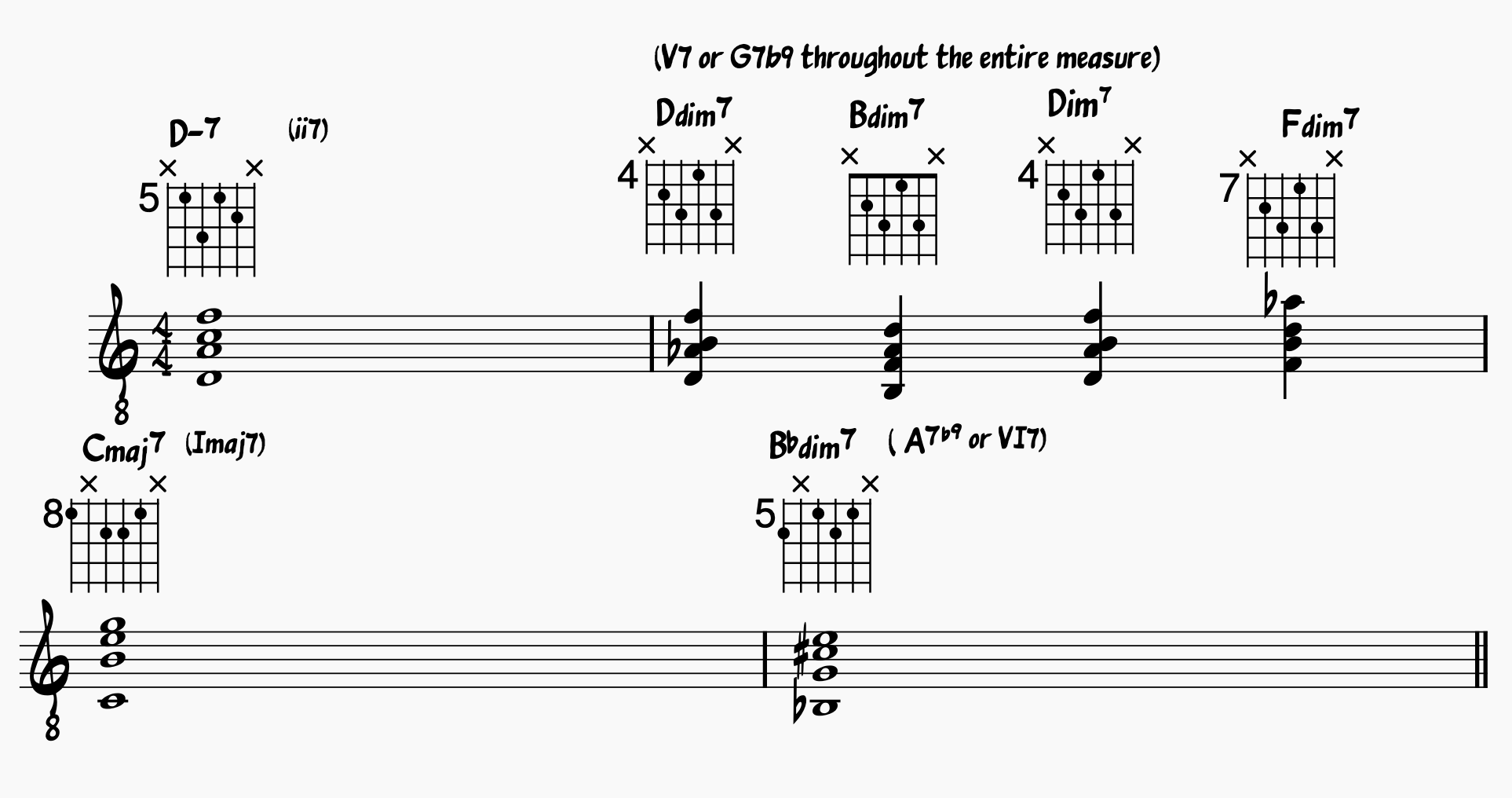
Are Diminished Seventh Chords Diatonic?
Fully diminished 7th chords are non-diatonic and cannot be found in any minor or major keys.
Think of the major scale.
No matter how you break up the intervals, you won’t find four notes each spaced a minor 3rd apart. That symmetry doesn’t exist in the major or natural minor scales. You can find three notes spaced apart in minor thirds, and that’s what gives us our diminished triad. However, you won’t find four.
The closest we get to this can be found in the diatonic chord built from the leading tone (or 7th scale degree) of the major scale.
This chord built off the leading tone is a m7b5 or half-diminished chord. Remember, a half-diminished chord has a minor 3rd, a flat 5th, and a minor 7th interval. A fully diminished chord has a diminished 7th interval.
However, this doesn’t mean you can’t find them in non-diatonic scales.
Harmonic Minor (Chord Scale)
You can find a fully diminished 7th chord when you create 7th chords from the harmonic minor scale.

Check out this post to learn more about using the harmonic minor scale.
Master Diminished Chords On the Guitar. Join The Learn Jazz Standards Inner Circle
If you found this article helpful and want to take your jazz guitar playing to the next level, check out the Learn Jazz Standards Inner Circle.
Not only do we have a Jazz Guitar Accelerator to help you get your jazz guitar playing where you want it to be, but you’ll also gain access to over a decade of curated resources, masterclasses, and jazz standard studies to help you master the art of jazz.
Ready to take your guitar playing to the next level? Become the best guitar player you can be.



